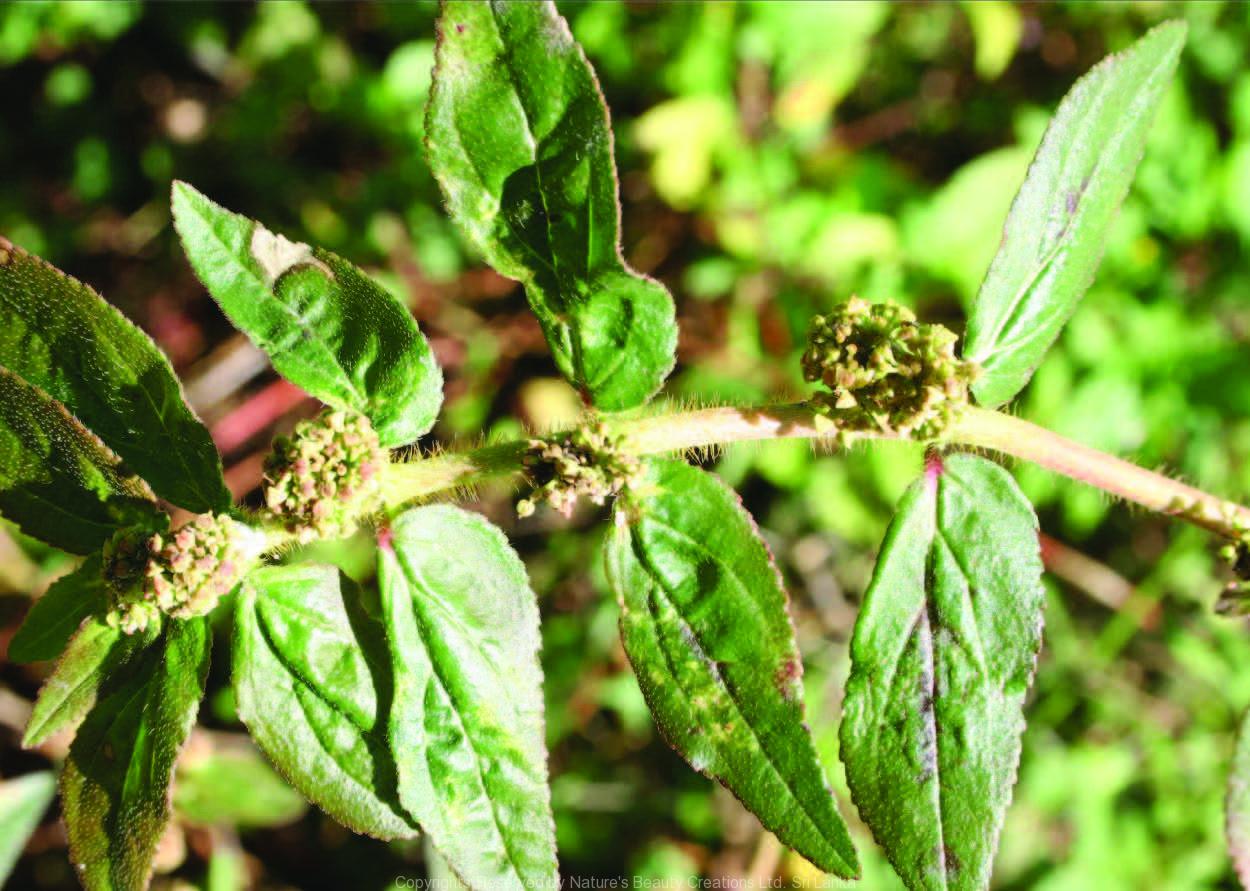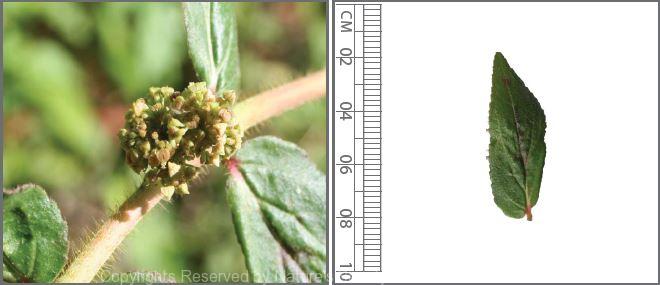

Traditional Knowledge
Useful plant parts :
Latex, aerial parts and whole plant
Uses in traditional medicine :
- Latex is applied on bleeding gums and oral wounds
- Latex and crushed aerial parts are used for worm diseases
- Whole plant is used for asthma, bronchitis, cardiac diseases, angina pectoris, dysentery, bowel complications including constipation
Scientific Research
Chemical constituents:
Flavonoid glycosides: afzelin, quercitrin, myricitrin, isorhamnetin, coumarins: scopoletin, scoparone, isoscopoletin, flavonoids: pinocembrin, kaempferol, luteolin and gallic acid from aerial parts; megastigmane glucoside gallates: hirtionoside A–C, 3-hydroxyoctanoic acid glucosides, phenylpropanoid glucosides from whole plant
Bioactivity :
Aqueous and alcohol extract of plant: anthelmintic, sedative, anxiolytic, antibacterial, antidiarrhoel, analgaesic, antipyretic, anti-inflammatory, immunosuppressor, antianaphylactic, burn wound healing, cytotoxic, genotoxic, bronchodilator; leaf extracts: antidiabetic, antioxidative, diuretic; afzelin, quercitrin, myricitrin: antimalarial, cytotoxic against human epidermoid carcinoma
Clinical:
References : Adedapo, A. A. et al., (2005), Anthelmintic efficacy of the aqueous crude extract of Euphorbia hirta Linn in Nigerian dogs, Veterinarski Arhiv, 75(1), 39-47. Ahmad, S. F. et al., (2013), Immunosuppressive effects of Euphorbia hirta in experimental animals, Inflammopharmacology, 21(2), 161-8. Anuradha, H. et al., (2008), Euphorbia hirta reverses chronic stress-induced anxiety and mediates its action through the GABAA receptor benzodiazepine receptor-Cl−channel complex, Journal of neural transmission, 115(1), 35-42. Galvez, J. et al., (1993), Antidiarrhoeic activity of Euphorbia hirta extract and isolation of an active flavonoid constituent, Planta Med, 59(4), 333-6. Jaiprakash, B. et al., (2006), Burn wound healing activity of Euphorbia hirta, Anc Sci Life, 25(3-4), 16-8. Johnson, P. B., et al., (1999), Euphorbia hirta leaf extracts increase urine output and electrolytes in rats, Journal of Ethnopharmacology, 65(1), 63-69. Kumar, S. et al., (2010), Antidiabetic and Free Radicals Scavenging Potential of Euphorbia hirta Flower Extract, Indian J Pharm Sci, 72(4), 533-7. Kumar, S. et al., (2010), Euphorbia hirta: It’s chemistry, traditional and medicinal uses and pharmacological activities, Pharmacogn rev, 4(7), 58-61. Lanhers, M. C. et al., (1990), Behavioral effects of Euphorbia hirta L.: sedative and anxiolytic properties, J Ethnopharmacol, 29(2), 189-98. Lanhers, M. C. et al., (1991), Analgesic, antipyretic and anti-inflammatory properties of Euphorbia hirta, Planta Med, 57(3), 225-31. Liu, L. et al., (2007), Antimalarial Flavonol Glycosides from Euphorbia hirta, Pharmaceutical Biology, 45(4), 278-281. Nomoto, Y. et al., (2013)., Hirtionosides A-C, gallates of megastigmane glucosides, 3-hydroxyoctanoic acid glucosides and a phenylpropanoid glucoside from the whole plants of Euphorbia hirta, J Nat Med, 67(2), 350-8. Ping, K. Y. et al., (2013), Cytotoxicity and genotoxicity assessment of Euphorbia hirta in MCF-7 cell line model using comet assay, Asian Pac J Trop Biomed, 3(9), 692-6. Subramanian, S. P. et al., (2011), Antidiabetic and antioxidant potentials of Euphorbia hirta leaves extract studied in streptozotocin-induced experimental diabetes in rats, Gen Physiol Biophys, 30(3), 278-85. Sundari, S. K. et al., (2004), Bronchodialator effect of alcoholic extract of Euphorbia hirta linn, Anc Sci Life, 23(3), 1-5. Vijaya, K. et al., (1995), Antibacterial effect of theaflavin, polyphenon 60 (Camellia sinensis) and Euphorbia hirta on Shigella spp. — a cell culture study, Journal of Ethnopharmacology, 49(2), 115-118. Youssouf, M. S. et al., (2007), Anti-anaphylactic effect of Euphorbia hirta, Fitoterapia, 78(7-8), 535-9. Wu, Y. et al., (2012), Phenols and flavonoids from the aerial part of Euphorbia hirta, Chin J Nat Med, 10(1), 40-2.
Copyrights Reserved By
Natures Beauty Creations



